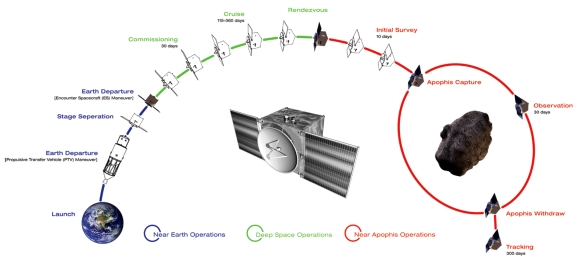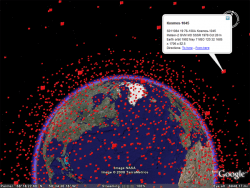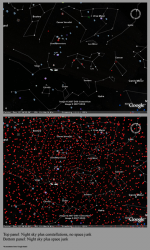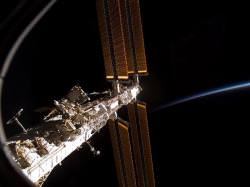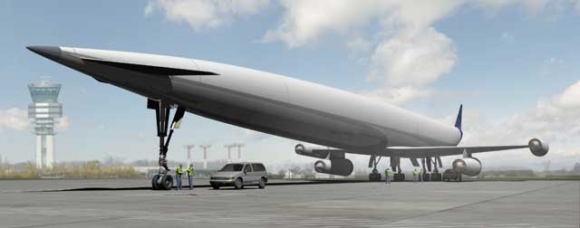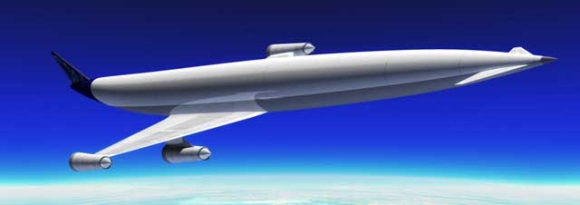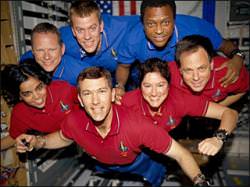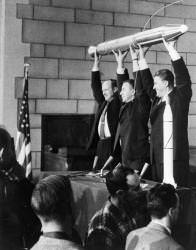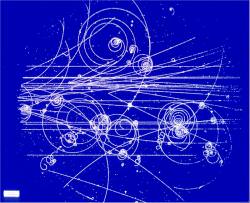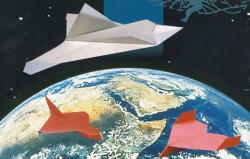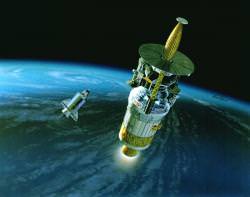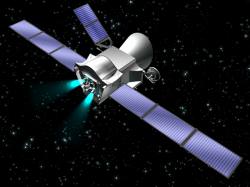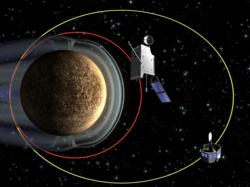The Near Earth Asteroid (NEO) Apophis is expected to flyby the Earth in 2029. However, this flyby will be more of a “fly-very-close” as the lump of rock will miss the Earth by only a few thousand kilometers. This near-miss isn’t worrying scientists too much, but should the asteroid tumble through a 400 meter gravitational “keyhole”, there is concern that the asteroid could swing by and risk another collision in 2036. Although the odds are fairly slim, astronomers need better precision in calculating Apopis’s orbital trajectory.
How can this be done? Why not send a spaceship to shadow the asteroid on its journey? The Planetary Society has announced just that. The winning design of the Apophis Mission Design Competition will send a probe and tag Apophis to gain more details about this interplanetary vagabond, and has been awarded a healthy $25,000 to help the development of the US “Foresight” mission…
99942 Apophis (otherwise known as asteroid 2004 MN4) caused quite a stir back in 2004 when it was discovered. Lacking detailed observation at the time, the probability of the 270 meter long piece of rock hitting the Earth was around 2.7% – a large risk in astronomical terms. Now we are sure the asteroid will fly straight by, albeit rather close. It is estimated that Apophis will pass within the orbit of geostationary satellites located at 35,786 km above Earth, allowing amateur astronomers a great opportunity to observe the NEO (it will be possible to see the asteroid with the naked eye at night), whilst being secure in the knowledge that it’s not going to come any closer.
So, panic over? Not quite. Although Apophis will miss us on its first approach in 2029, we might not be so lucky on one of its return trips in 2036. During its flyby in 2029, should the asteroid pass through a critical gravitational “keyhole” measuring only 400 meters across, the gravitational deflection applied to the Apophis asteroid may adjust its orbit, setting it up for a collision course with Earth seven years later.
This is the reason for events such as the Planetary Society’s Apophis Mission Design Competition, to raise awareness of the risk posed by NEOs. Although the winning entry, designed by SpaceWorks Engineering Inc. (Atlanta, Georgia) in conjunction with SpaceDev Inc. (Poway, California), is in the design phase, it is hoped that the completed project could launch by 2012. “Foresight” is intended to fly to Apophis and tag the rock with tracking equipment. The orbiter will continue to study the asteroid and follow it on its orbit around the Sun, gathering valuable information about its composition, center of mass, surface features and, most importantly, its trajectory.
Missions plans such as Foresight are required by the international community to be used should the threat of an asteroid collision become reality (and not remain in cheesy sci-fi movies like Deep Impact or Armageddon).
“Apophis isn’t science fiction, it isn’t a blockbuster Hollywood movie; it is very real.” – Dan Geraci, the Planetary Society’s board chairman.
For more information on the winning entry and the other award winning designs, see the Planetary Society’s Apophis Mission Design Competition website.

